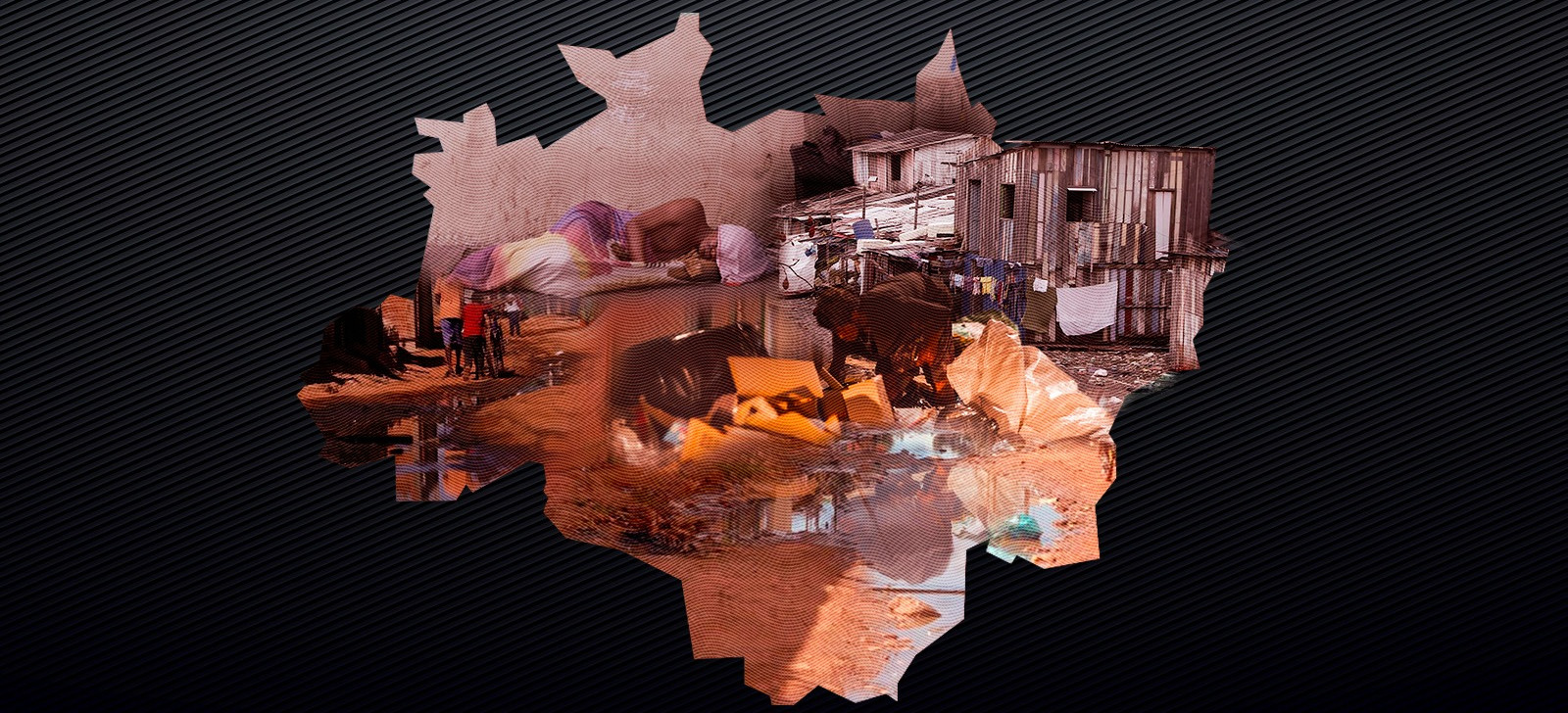Twenty cities with the worst quality of life in Brazil are in the Legal Amazon
12 de February de 2025

By Jadson Lima – From Cenarium
MANAUS (AM) – The 20 cities with the worst quality of life in the country are concentrated in the Legal Amazon, according to a survey conducted by the Social Progress Index (IPS) Brazil and published in January this year. The study, which considers data from 2024, analyzed all 5,570 Brazilian municipalities and measures social and environmental performance.
The survey indicates that the state of Pará has the highest number of cities listed as having the worst performance in IPS Brazil in 2024. These municipalities accounted for eight entries among the 20 cities with the worst quality of life in the country. Next is the state of Roraima, which has four municipalities among the worst performers, followed by Amapá (2), Mato Grosso (2), Acre (2), and Maranhão (1).

According to the study, the ranking of the 20 municipalities with the best and worst performances regarding the general IPS Brazil 2024 scores revealed a stark contrast between the North, particularly in the Legal Amazon, where most of the critical municipalities are concentrated. On the other hand, the survey shows that the Southeast region of Brazil is home to municipalities with the highest IPS scores.
Roraima is the state that, proportionally, occupies the worst indices when considering the study’s ranking. The city of Uiramutã ranks first, with an overall score of 37.63/100, followed by Alto Alegre (38.38/100), Bonfim (42.27/100), and Amajari (43.38/100). In Amapá, Oiapoque has the lowest scores (42.46/100) alongside Pracuúba (43.50/100).
The municipality of Feijó, in Acre, is also among the 20 cities with the worst quality of life in the country, ranking 16th with a score of 43.11/100, followed by Santa Rosa do Purus, with 43.78/100. In the state of Mato Grosso, the cities of Nova Nazaré and Gaúcha do Norte rank among the lowest in quality of life, with scores of 42.78/100 and 43.53/100, respectively.
Among the cities in Pará included in the study, seven are located in the southwest of the state, with populations ranging from 4,000 to 62,500 inhabitants. These are: Bannach (4,000), Jacareacanga (24,042), Cumaru do Norte (14,036), Pacajá (41,097), Uruará (43,558), and Anapu (31,850), along with the city of Portel (62,503), which is situated in the Marajó mesoregion.
The IPS report is structured around three main pillars: basic human needs, well-being foundations, and opportunities. According to the study, each of these pillars includes four components: basic needs, nutrition and basic medical care, water and sanitation, housing, as well as personal security.
States
Among the states in the Legal Amazon, Pará also ranks the lowest, scoring 53.20/100, followed by Acre (55.31), Rondônia (55.67), Maranhão (55.72), Amapá (55.76), Roraima (56.83), Amazonas (57.83), and Tocantins (58.23). The state of Mato Grosso holds the best position among the states in the region, with an overall index score of 60.15/100.
According to the survey, economic performance alone does not explain the social progress of a municipality. For this reason, the study notes, the IPS serves as a tool to help territories better understand the relationship between socio-environmental progress and economic development, as it allows for correlations between IPS scores and economic indicators.
According to the 11 authors of the research, the analysis based on IPS Brazil 2024 and the 2021 Gross Domestic Product (GDP) per capita reveals a significant variation in results, particularly among municipalities with a per capita GDP below R$ 100,000. There was a considerable range in social progress results among municipalities with lower GDP levels, meaning that even with a low GDP, it is possible to achieve high IPS Brazil scores.
“One example occurred between two municipalities in the Legal Amazon with similar per capita GDP levels but very different IPS results. On one side was the municipality of Jacareacanga-PA – which struggled with illegal mining and deforestation – with an IPS of 38.92 and a ranking of 5,566/5,570, and on the other, the municipality of Itacoatiara-AM with an IPS of 58.60 and a ranking of 2,579/5,570, located in a more preserved area of the Amazon,” says an excerpt from the survey.
CENARIUM contacted the Ministry of Regional Development on Monday, the 10th, to inquire about ongoing actions and whether there are plans for future initiatives in these municipalities, which reported the worst quality of life indices in the country. The report also reached out to the Government of Pará, which has the highest number of mentioned cities. As of the publication of this material, there had been no response.

